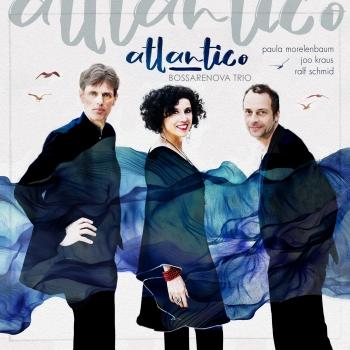Bossarenova Trio
Biography Bossarenova Trio
Bossarenova Trio
When Paula Morelenbaum released the album “Casa” back in 2001 together with her husband, cellist Jacques Morelenbaum, and the Japanese pianist and free-thinker Ryuichi Sakamoto, the trio’s CD was received with enthusiasm worldwide. The three of them had their own way of defining how the wealth of Brazilian songs was to be dealt with.
12 years later, a new transatlantic trio has emerged featuring Paula Morelenbaum as vocalist that looks into the term ‘song’ from a German, Brazilian, European and South American point of view. Dori Caymmi, Frederic Chopin, Antonio Carlos Jobim, Schumann, Villa-Lobos, Pixinguinha, Claudio Monteverdi, Baden Powell, Franz Schubert and Marcos Valle – different continents and epochs, yet the essence and family tree behind mutual inspiration, too. An equally venturous and stand-alone coalescence of two cultures.
Trumpet-player and ECHO Jazz prize-winner Joo Kraus, arranger Ralf Schmid, Kraus’s fellow comrade on many projects, and vocalist Paula Morelenbaum, who calls Rio de Janeiro home, got to know each other on the occasion of the Bossarenova big-band project that the German SWR Bigband carried out in 2009. The goal was to use opulent Jazz arrangements to breathe new life into timeless classics from the days of Brazilian Bossa Nova. Due to the numerous concerts the three of them performed with the SWR Bigband, it was virtually inevitable that the desire to step onstage as the nucleus within a trio would ensue.
Concerts ranging from San Francisco to New York City and on to Berlin and Hamburg ensured that this alliance of musicians, now christened “Bossarenova Trio”, immersed itself deeper and deeper while becoming familiar with different and reciprocal roots. A project ultimately evolved that grasped labels like Acoustic / Electro / Balanço / Belcanto / Sodino / Whistling / Drumming / Playing and cast them away again, music that picked up the trail of individual ‘songs’ from a variety of cultural spheres and eras. Without any attempt to curry favor with a particular ‘zeitgeist’ or classic form, what emerged was a melange that allows designation as the Bossarenova Trio’s very own language. “Samba Prelúdio” is nothing less than a work that bridges the cultural gap, that links the classic European ‘Lied’ with the musical language spoken on the South American continent, a juncture of Bossa Nova with Jazz and Classical Music in a way that hadn’t been tried yet.











